Yearning to discover the hidden Bible verses that hint at Peter's unique crucifixion? Journey with us as we unravel this mysterious biblical event.
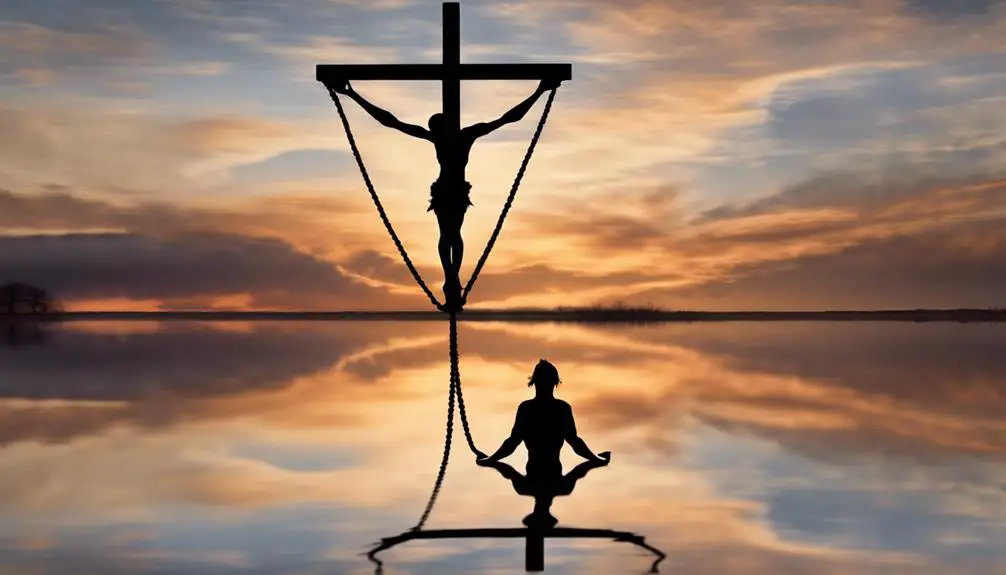
A Bible Verse That Say About Peter Crucified Upside Down
You may recall the tale of Peter's departure from this world, a story of extraordinary courage and humility. According to tradition, Peter, one of Jesus' most devoted followers, met his end on a cross like his Master.
However, there's a unique twist – it's said he was crucified upside down. Now, you might be wondering, where does the Bible discuss this unusual event?
The truth is, it's not explicitly stated in the scriptures, but certain verses provide intriguing hints. Would you like to discover those for yourself?
Key Takeaways
- The Bible indirectly suggests Peter's upside-down crucifixion through Jesus' prophecy in John 21:18-19.
- 2 Peter 1:14 aligns with this prophecy, hinting at Peter's impending death.
- The upside-down cross, representing Peter's crucifixion, symbolizes humility and deference to Jesus.
- Despite direct biblical references lacking, Christian tradition and interpretation hold that Peter was crucified upside down.
Historical Context of Peter's Crucifixion
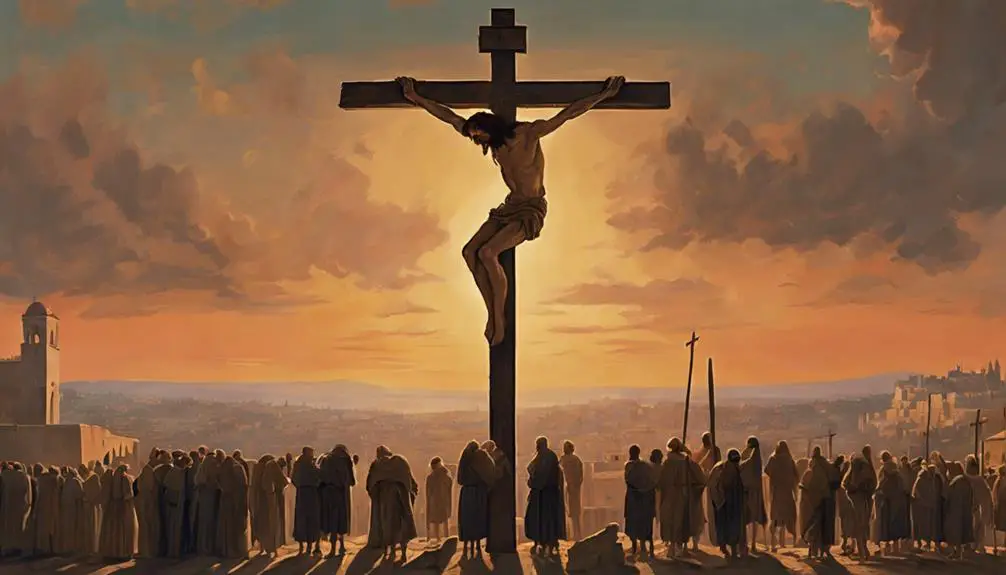
In order to fully understand the significance of Peter's crucifixion upside down, it's crucial to delve into the historical context that surrounded this pivotal event in Christian history. This incident occurred during the reign of Emperor Nero, a ruler infamous for his brutal persecution of Christians in Rome around 64 AD.
Peter, who was a leading figure among Jesus's disciples, had been spreading the teachings of Christ in Rome. However, the city was a hotbed of pagan worship, and Christians were viewed with suspicion and hostility. When a devastating fire ravaged Rome, Nero found an easy scapegoat in the Christian community, charging them with arson to divert attention from rumors that he himself had ordered the fire.
During Nero's violent crackdown, Peter was arrested and sentenced to death by crucifixion. It's widely believed that he requested to be crucified upside down, feeling unworthy to die in the same manner as Jesus. This act of humility and faith in the face of horrifying death speaks volumes about Peter's character and commitment to his beliefs.
To understand the profound impact of Peter's crucifixion, this historical backdrop is indispensable.
Biblical References to Peter's Death
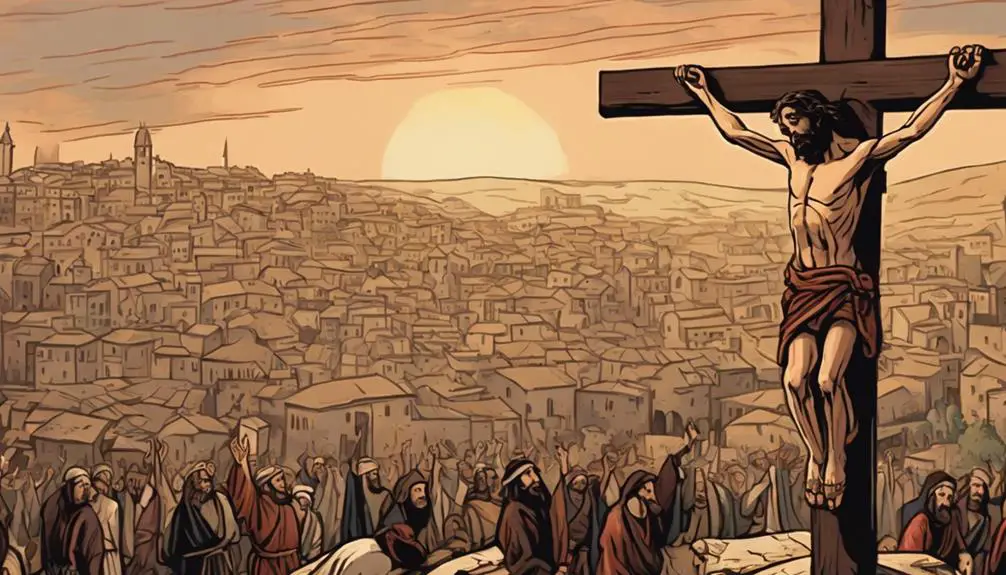
While there isn't a direct mention of Peter's crucifixion in the Bible, you'll find subtle references and prophetic utterances that suggest his martyrdom. John 21:18-19 is noteworthy where Jesus foretold Peter's death. You'll notice the symbolism in Jesus' words, 'when you're old, you'll stretch out your hands, and another will dress you and take you where you don't want to go'. These words are often interpreted to be a prediction of the nature of Peter's death.
The phrase 'stretch out your hands' is perceived as a metaphor for crucifixion. The 'another' is seen as the executioner, and 'where you don't want to go' is interpreted to symbolize an unwilling death. Furthermore, the Bible states that Jesus said this to indicate by what kind of death Peter would glorify God.
Moreover, in 2 Peter 1:14, Peter himself speaks of his impending death, stating, 'I know that the putting off of my body will be soon, as our Lord Jesus Christ made clear to me'. This reference to his forthcoming demise aligns with the prophetic utterance made by Jesus, further supporting the theory of his crucifixion.
Understanding the Upside-Down Crucifixion Symbolism
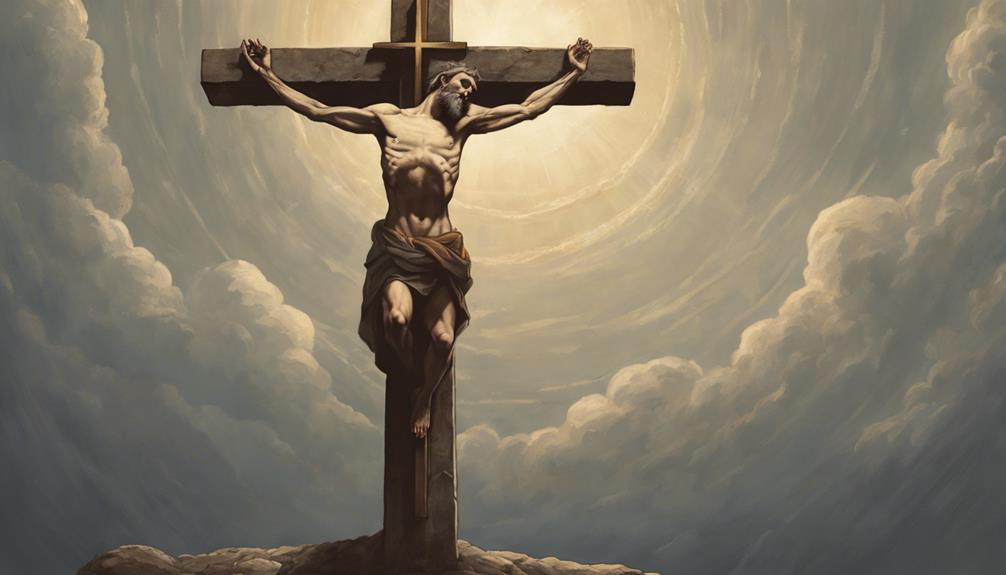
Often, you'll come across the symbol of an upside-down cross, which is closely associated with Peter's crucifixion, an act of humble deference to Jesus' own crucifixion. This symbol is steeped in profound symbolism, rooted in the narrative of Christianity.
The upside-down crucifixion of Peter isn't merely a historical event; it's a symbol with deep theological implications. It represents the ultimate act of humility and deference. Peter, one of the most ardent followers of Jesus, didn't consider himself worthy to die the same way as his master. By requesting to be crucified upside down, he acknowledged Jesus' unique significance and his own unworthiness.
The symbol also underscores the paradoxical nature of Christian teachings. It's a symbol of both death and life, sacrifice and victory, humiliation and exaltation. Through his upside-down crucifixion, Peter exhibited his deep understanding of these paradoxes. He wasn't seeking a glorious death; instead, he was embracing Christ's teachings about the last being first, the humble being exalted.
Understanding this symbolism is crucial to appreciate fully the depth of Peter's faith and the intensity of his commitment to Christ. It's more than just a symbol; it's a testament to Peter's unwavering devotion.
Interpretations of the Crucifixion Verse
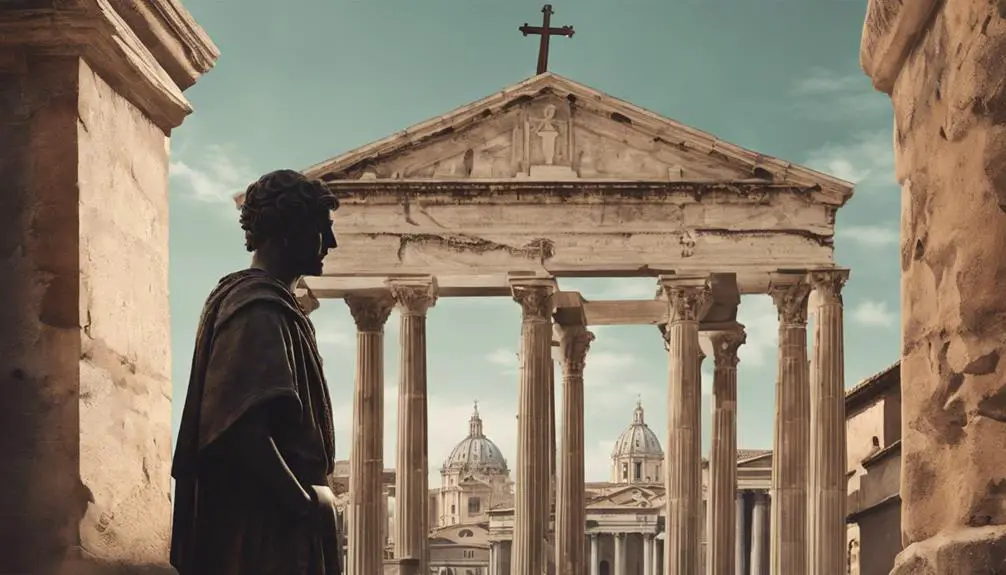
Diving into the interpretations of the crucifixion verse gives you a deeper insight into the theological significance of Peter's upside-down crucifixion. Various theologians and scholars have different interpretations of this event and its symbolism.
The table below provides a brief overview of the interpretations of two key perspectives:
Perspective |
Interpretation |
|---|---|
Symbol of Humility |
Some believe Peter's request to be crucified upside down was a demonstration of his humility, signifying he didn't deem himself worthy to die in the same manner as Jesus. |
Act of Defiance |
Others interpret it as an act of defiance against the Roman Empire, a powerful statement of faith and resistance to persecution. |
Spiritual Overcoming |
Some view it as a symbol of spiritual overcoming, with Peter's inverted position representing the spiritual world triumphing over the earthly. |
Ultimate Sacrifice |
For others, it is seen as the ultimate sacrifice, a testament to Peter's unwavering faith in Jesus, even unto death. |
These interpretations, while varied, underscore the profound impact of Peter's crucifixion on Christian theology, illuminating deeper truths about faith, sacrifice, and spiritual victory.
Influence on Christian Art and Culture
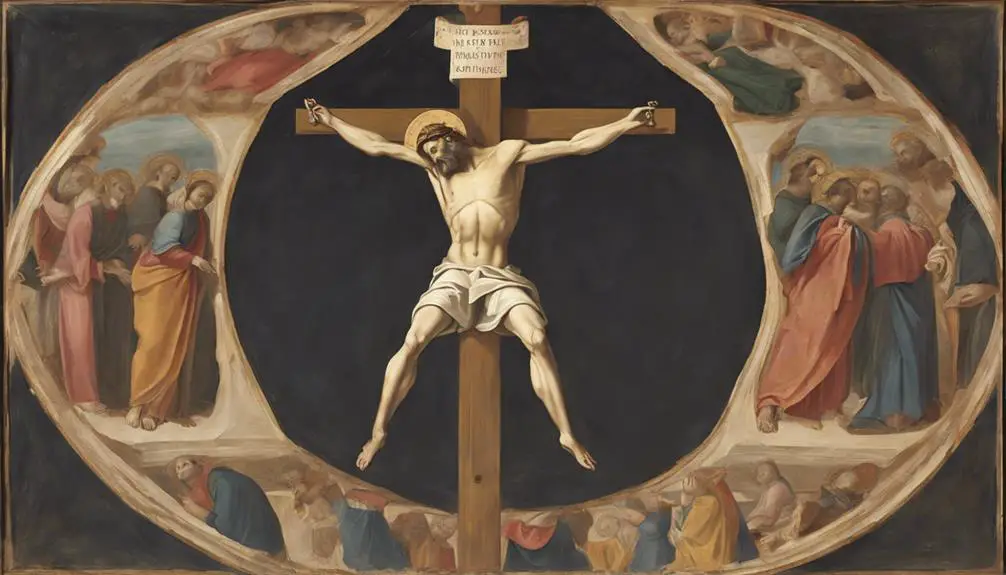
Peter's unique crucifixion has left a lasting imprint on Christian art and culture, inspiring numerous portrayals and interpretations throughout the centuries. This event's depiction in visual arts has been profound. You'll find countless paintings, sculptures, and stained-glass windows in churches worldwide, illustrating Peter's crucifixion upside down, a symbol of his unwavering faith and humility.
This depiction has also influenced literary works. Many poets and writers have used this poignant event as a metaphor for self-sacrifice and unwavering conviction. It's even shaped Christian music, with hymns and songs echoing Peter's courage and devotion.
Moreover, in modern pop culture, Peter's inverted crucifixion has taken on additional meanings. In films and books, it often symbolizes the struggle against oppressive forces or defiance of conventional norms. However, it's important to remember the original context of this symbol: a testament to faith, humility, and the ultimate sacrifice.
Conclusion
So, you've understood Peter's crucifixion's historical context, Biblical references, and its upside-down symbolism.
You've explored various interpretations of the crucifixion verse and its influence on Christian art and culture.
It's clear that Peter's death has a profound impact on Christianity, shaping its visual and symbolic language.
Remember, these interpretations can vary, and it's crucial to engage with them critically and thoughtfully.



Sign up